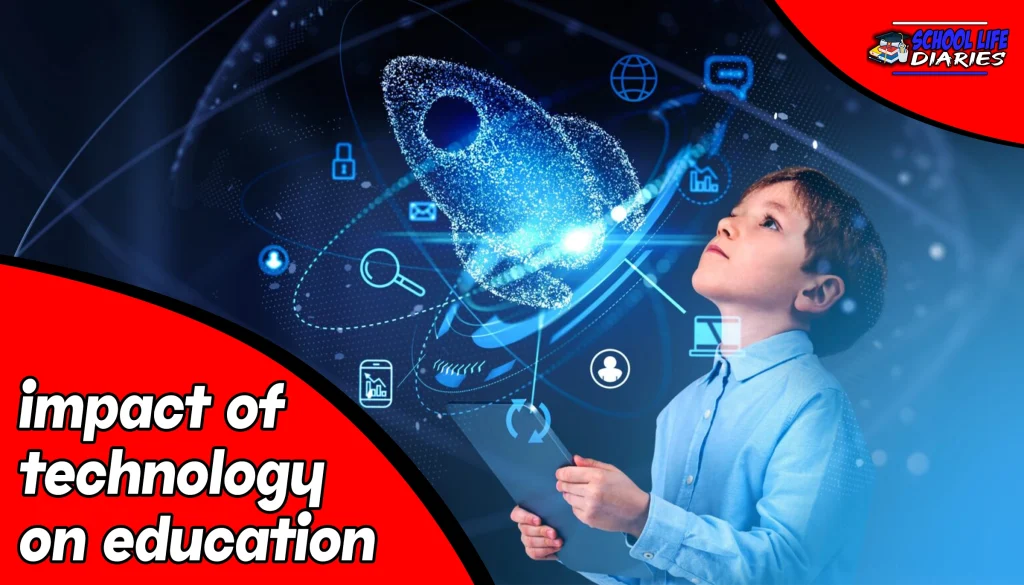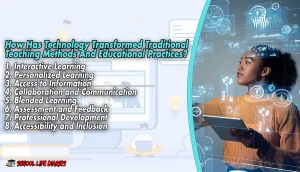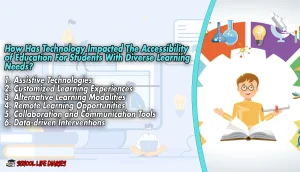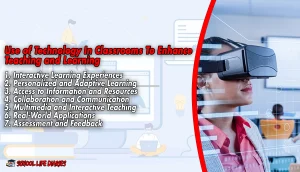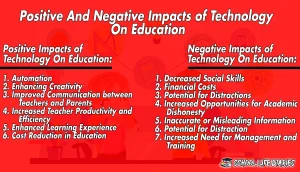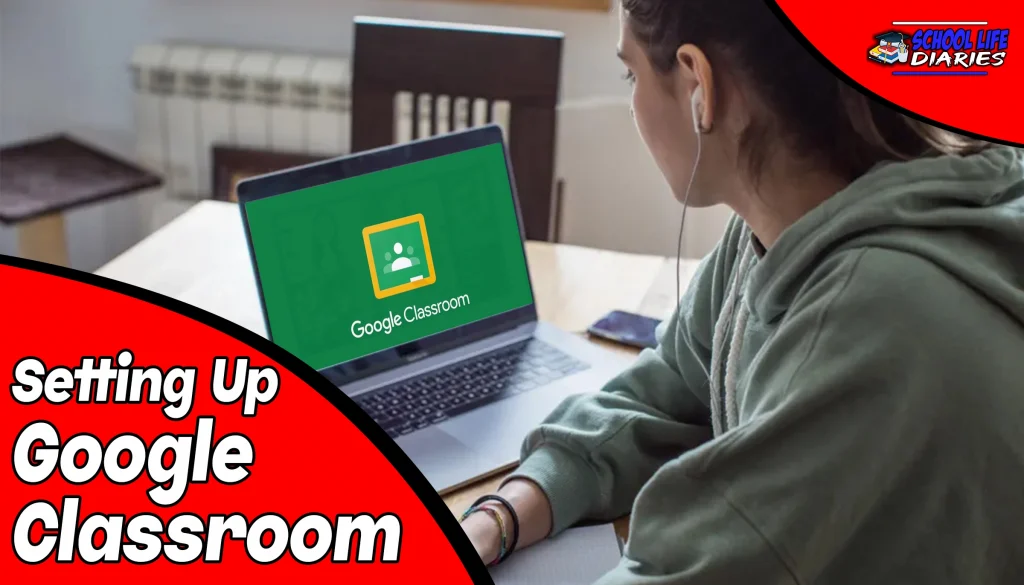Technology has undeniably revolutionized the world we live in, and its impact on education is no exception. In today’s digital age, classrooms have transformed into dynamic learning environments where students have access to a wealth of information and resources at their fingertips. From interactive online platforms to educational apps and virtual reality tools, technology has opened up new avenues for teaching and learning.
In this blog post, we will explore the profound impact of technology on education, examining how it has reshaped traditional teaching methods, enhanced student engagement, and equipped learners with essential skills for the future. Join us on this enlightening journey as we delve into the transformative power of technology in education and its potential to shape the future of learning.
How Has Technology Transformed Traditional Teaching Methods And Educational Practices?
Technology has transformed traditional teaching methods and educational practices in several impactful ways:
1. Interactive Learning:
Technology has introduced interactive learning tools such as educational apps, online platforms, and multimedia resources. These tools engage students in a more dynamic and participatory learning experience, where they can explore concepts through simulations, videos, and interactive exercises.
2. Personalized Learning:
Technology enables personalized learning experiences tailored to individual student needs. Adaptive learning platforms and intelligent tutoring systems use data and algorithms to deliver customized content and provide targeted support, helping students learn at their own pace and address specific learning gaps.
3. Access to Information:
The internet has revolutionized access to information. Students can now conduct research, access digital libraries, and explore online databases to gather information for projects and assignments. This instant access to a wealth of knowledge has expanded learning opportunities and empowered students to become independent learners.
4. Collaboration and Communication:
Technology facilitates collaboration and communication among students, educators, and experts from around the world. Online collaboration tools, video conferencing platforms, and discussion forums enable students to engage in group projects, connect with peers, and learn from diverse perspectives, fostering global awareness and cultural understanding.
5. Blended Learning:
Technology has facilitated the adoption of blended learning approaches, combining traditional classroom instruction with online resources and activities. This blended approach allows for a more flexible and personalized learning experience, as students can access materials online, review lectures, and engage in interactive exercises both inside and outside the classroom.
6. Assessment and Feedback:
Technology has revolutionized assessment methods by offering digital tools for quizzes, online assignments, and automated grading systems. This streamlines the assessment process, provides timely feedback to students, and allows educators to track progress and adjust instruction accordingly.
7. Professional Development:
Technology has expanded professional development opportunities for educators. Online courses, webinars, and virtual conferences enable teachers to enhance their skills, stay updated with the latest teaching methodologies, and connect with a global network of educators.
8. Accessibility and Inclusion:
Technology has improved accessibility and inclusion in education. Assistive technologies, such as screen readers, speech recognition software, and alternative input devices, enable students with disabilities to participate fully in the learning process, breaking down barriers and promoting inclusivity.
How Has Technology Impacted The Accessibility of Education For Students With Diverse Learning Needs?
Technology has had a profound impact on the accessibility of education for students with diverse learning needs. Here are some ways in which technology has made education more accessible and inclusive:
1. Assistive Technologies:
Technology has introduced a wide range of assistive technologies that support students with diverse learning needs. For example, screen readers help visually impaired students access written content, while speech recognition software enables students with physical disabilities to interact with computers using their voice. These assistive technologies empower students by providing them with tools to overcome barriers and fully engage in the learning process.
2. Customized Learning Experiences:
Technology allows for personalized and customized learning experiences, catering to the specific needs of individual students. Adaptive learning platforms and software can analyze a student’s performance, identify areas of strength and weakness, and provide tailored content and resources to support their learning journey. This personalized approach helps students with diverse learning needs receive targeted instruction and support.
3. Alternative Learning Modalities:
Technology provides alternative learning modalities that accommodate diverse learning needs. For example, videos with captions or sign language interpretation benefit students with hearing impairments, while interactive simulations and visualizations help students with different learning styles understand complex concepts. Online resources and digital textbooks offer flexible options for accessing educational materials, allowing students to choose formats that best suit their needs.
4. Remote Learning Opportunities:
The recent advancements in technology have facilitated remote learning opportunities, which have proven particularly beneficial for students with diverse learning needs.
Remote learning allows students to access education from their own environment, providing flexibility, reducing physical barriers, and accommodating individual needs.
It also opens up opportunities for students to engage with specialized instructors and resources regardless of their geographical location.
5. Collaboration and Communication Tools:
Technology enables students with diverse learning needs to collaborate and communicate effectively with peers and teachers. Online platforms, discussion forums, and video conferencing tools foster inclusive environments where students can exchange ideas, contribute to group projects, and participate in classroom discussions, irrespective of their physical location or communication preferences.
6. Data-driven Interventions:
Technology allows educators to collect and analyze data on student performance, progress, and engagement. This data-driven approach helps identify students who may require additional support or interventions.
Educators can then use technology-based interventions, such as adaptive learning programs or targeted instructional strategies, to address specific learning needs and ensure that all students can achieve academic success.
Use of Technology In Classrooms To Enhance Teaching and Learning:
The use of technology in classrooms has revolutionized teaching and learning, providing a positive impact of technology on education multitude of benefits and enhancing the educational experience for both teachers and students. Let’s explore some of the ways in which technology enhances teaching and learning:
1. Interactive Learning Experiences:
Technology fosters interactive learning experiences that actively engage students in the learning process. Through multimedia presentations, educational apps, and online simulations, students can explore concepts, manipulate virtual objects, and participate in immersive activities. This interactivity promotes curiosity, critical thinking, and a deeper understanding of the subject matter.
2. Personalized and Adaptive Learning:
Technology enables personalized and adaptive learning experiences tailored to each student’s unique needs and learning pace. Educational software and platforms can analyze students’ progress and provide customized content and resources to support their individual learning journeys. Adaptive learning algorithms adjust the level of difficulty and provide targeted feedback, ensuring students receive the right level of challenge and support.
3. Access to Information and Resources:
The Internet and digital tools provide students with easy access to a vast array of information and educational resources. Online libraries, digital textbooks, and educational websites offer a wealth of knowledge and diverse perspectives. Students can conduct research, explore different sources, and access up-to-date information, enriching their understanding of subjects and expanding their learning beyond the confines of the classroom.
4. Collaboration and Communication:
Technology facilitates collaboration and communication among students and teachers. Online platforms, discussion forums, and collaborative tools enable students to work together on projects, share ideas, and engage in meaningful discussions. Virtual classrooms and video conferencing tools break down geographical barriers, connecting students with peers from around the world, fostering cultural understanding, and promoting global collaboration.
5. Multimedia and Interactive Teaching:
Technology empowers teachers to create dynamic and engaging lessons using multimedia resources. They can incorporate videos, images, audio clips, and interactive presentations to captivate students’ attention and cater to diverse learning styles. Multimedia elements make abstract concepts more tangible, facilitate visual and auditory learning, and enhance overall comprehension.
6. Real-World Applications:
Technology bridges the gap between theoretical concepts and real-world applications. Students can engage in virtual experiments, simulations, and problem-solving activities that mirror real-life scenarios. This application-oriented approach helps students understand the practical relevance of what they learn, encourages critical thinking, and prepares them for future challenges.
7. Assessment and Feedback:
Technology simplifies the assessment process, allowing teachers to create and administer online quizzes, tests, and assignments. Automated grading systems save time, provide immediate feedback, and enable teachers to track students’ progress more efficiently. This timely feedback helps students identify their strengths and areas for improvement, guiding their learning journey and promoting continuous growth.
Positive And Negative Impacts of Technology On Education:
Positive Impacts of Technology On Education:
1. Automation:
Technology has automated various educational processes, such as grading, record-keeping, and administrative tasks, which saves time and increases efficiency for teachers and staff. This automation allows educators to focus more on instructional planning and individualized student support.
2. Enhancing Creativity:
Technology provides students with tools and platforms to express their creativity and innovative ideas. Digital media, graphic design software, and multimedia applications enable students to create engaging presentations, videos, artwork, and music, fostering their creative thinking and self-expression.
3. Improved Communication between Teachers and Parents:
Technology facilitates better communication channels between teachers and parents. Online platforms, emails, and instant messaging apps allow for regular updates, progress reports, and quick communication regarding student performance, enabling parents to actively participate in their child’s education.
4. Increased Teacher Productivity and Efficiency:
Technology has streamlined teaching processes, allowing teachers to access a wide range of resources, lesson plans, and instructional materials. This accessibility improves teacher productivity, lesson planning, and instructional delivery, ultimately benefiting student learning outcomes.
5. Enhanced Learning Experience:
Technology makes learning more engaging, interactive, and accessible. Digital tools, online learning platforms, and educational apps provide students with diverse learning opportunities, interactive lessons, and immediate feedback, catering to different learning styles and enhancing overall comprehension.
6. Cost Reduction in Education:
Technology has the potential to reduce the cost of schooling. Digital textbooks, online resources, and open educational resources (OER) can significantly lower the expenses associated with traditional print materials. Additionally, online courses and virtual classrooms eliminate the need for physical infrastructure and reduce transportation costs.
Negative impacts of technology on education:
1. Decreased Social Skills:
Excessive use of technology in education can hinder the development of students’ social skills and face-to-face interactions. Over-reliance on digital communication may lead to a lack of interpersonal skills, empathy, and effective communication in real-life situations.
2. Financial Costs:
Integrating technology into education can be expensive, requiring investments in devices, software licenses, and infrastructure. Limited financial resources in schools or regions can hinder access to the necessary technology, creating disparities in educational opportunities.
3. Potential for Distractions:
The presence of technology devices in classrooms can create distractions for students. Access to social media, gaming, or unrelated websites may divert students’ attention from their learning tasks, impacting their focus and academic performance.
4. Increased Opportunities for Academic Dishonesty:
Technology can facilitate cheating and plagiarism among students. Easy access to information online and the ability to copy and paste text can lead to academic integrity issues if proper measures are not in place to monitor and prevent such behaviors.
5. Inaccurate or Misleading Information:
With the abundance of information available on the internet, students may encounter inaccurate, biased, or unreliable sources. This challenges their critical thinking skills and the ability to discern credible information from misinformation or fake news.
6. Potential for Distraction:
The presence of technology devices in classrooms can create distractions for students. Access to social media, gaming, or unrelated websites may divert students’ attention from their learning tasks, impacting their focus and academic performance.
7. Increased Need for Management and Training:
Integrating technology in education requires proper management and training for teachers and staff. Keeping up with technological advancements, troubleshooting technical issues, and ensuring the effective use of technology can be challenging and time-consuming.
Related Article: Is Course Hero Worth It? Pros And Cons
Final Thoughts: Impact of Technology On Education
The impact of technology on education is undeniable. It has revolutionized traditional teaching methods, providing interactive learning experiences, personalized and adaptive learning, access to vast information and resources, collaboration and communication opportunities, multimedia and interactive teaching tools, real-world applications, and effective assessment and feedback mechanisms. Technology has opened new doors of learning possibilities, promoting engagement, creativity, and critical thinking among students.

